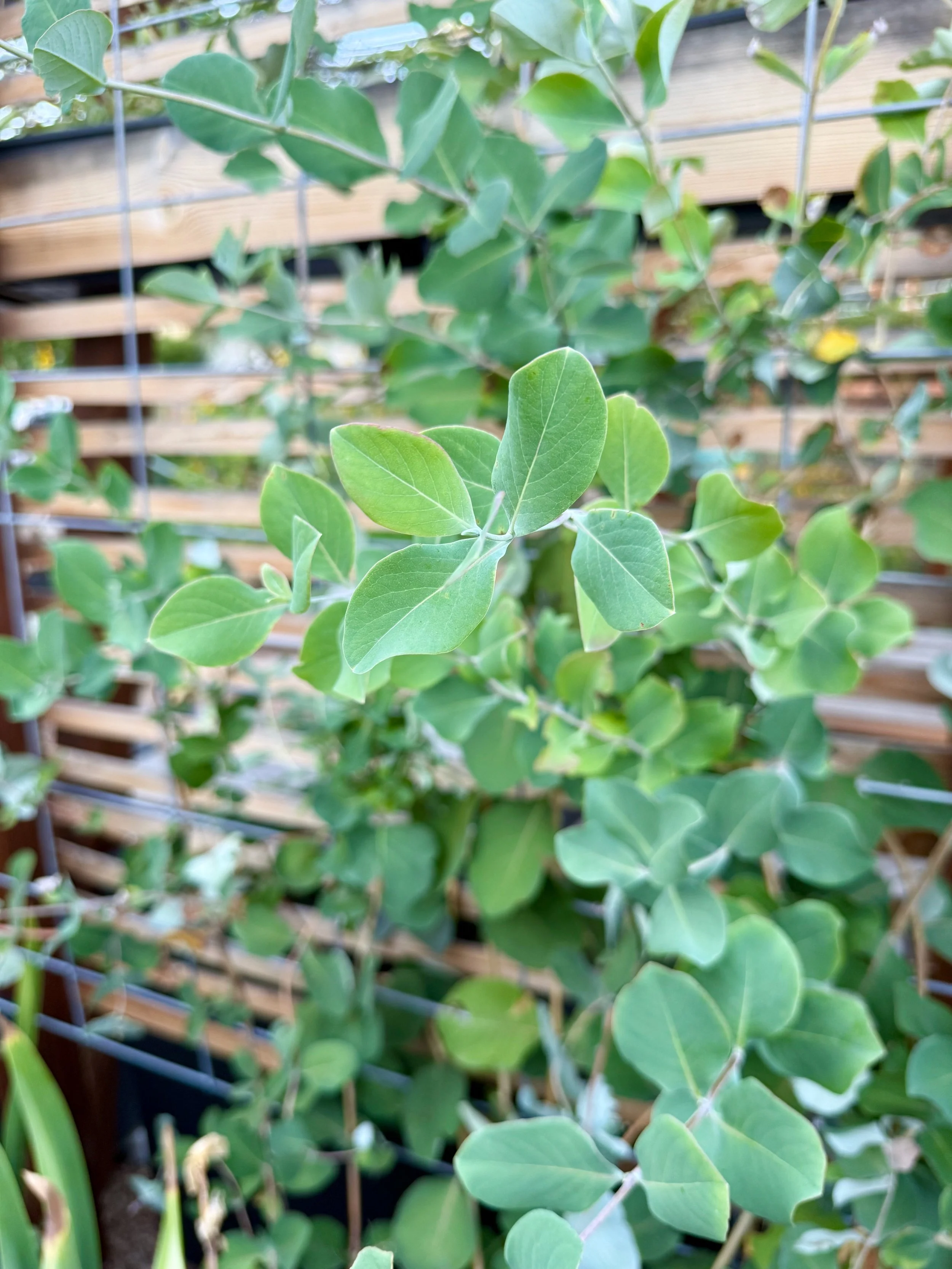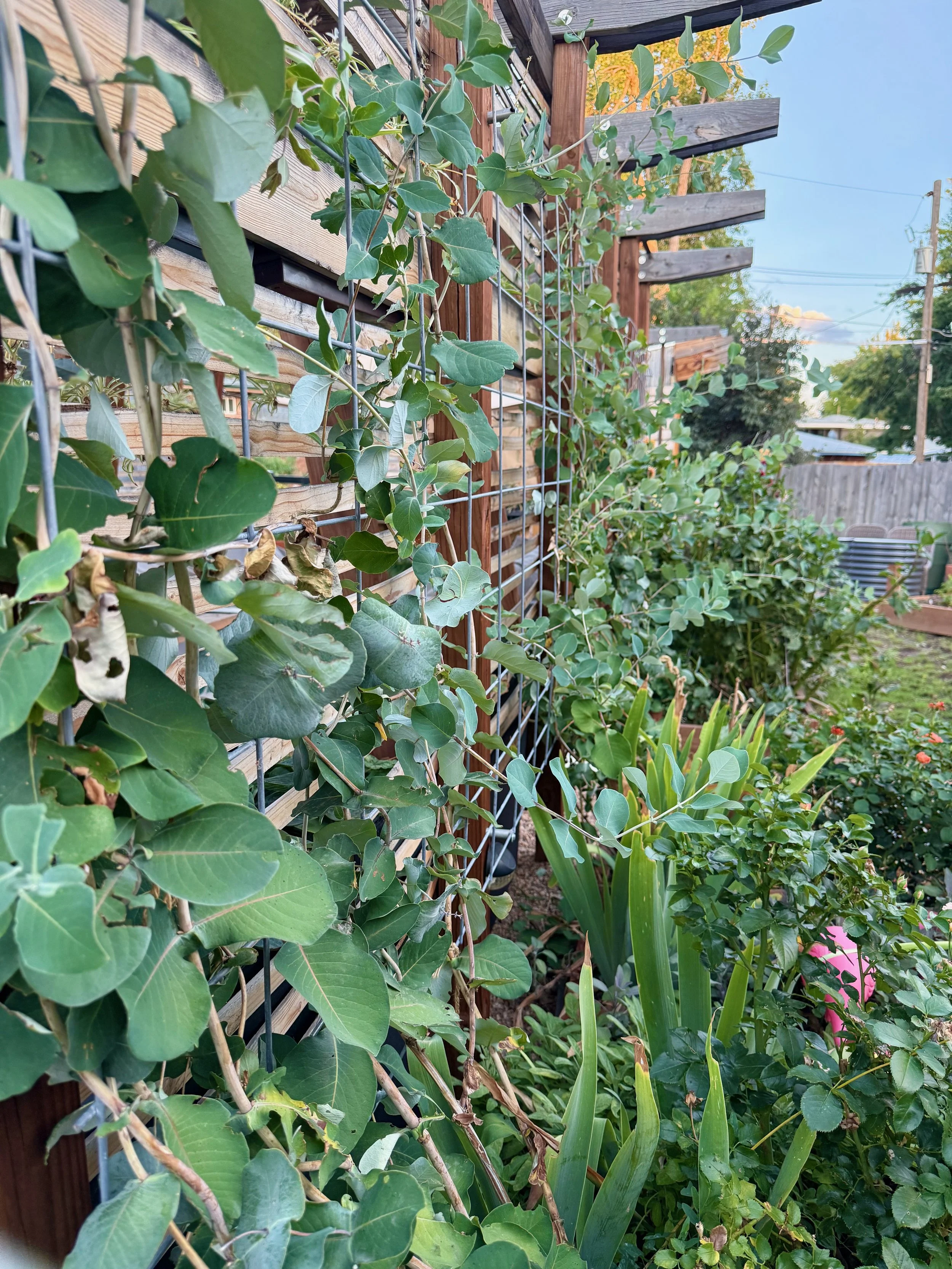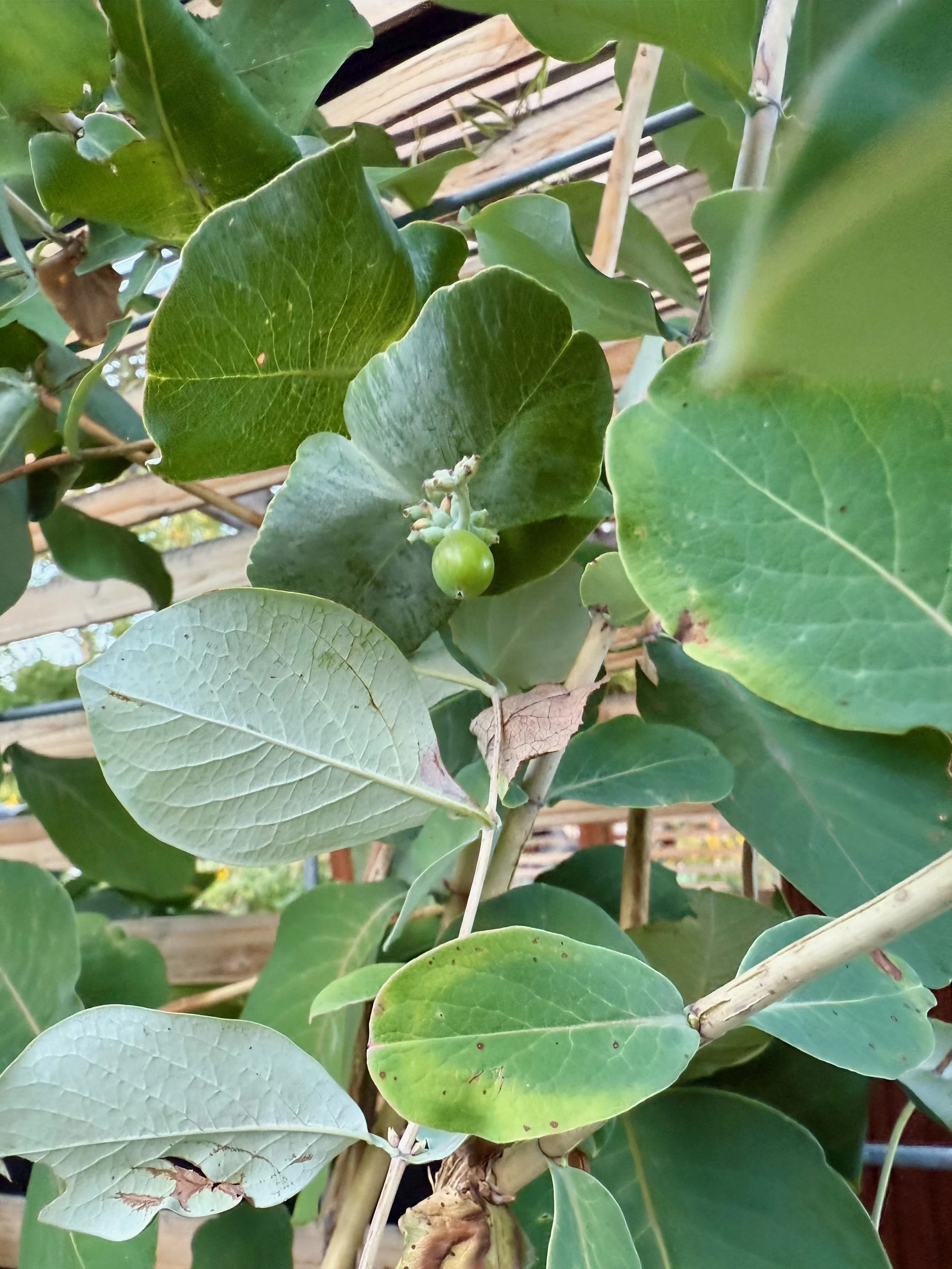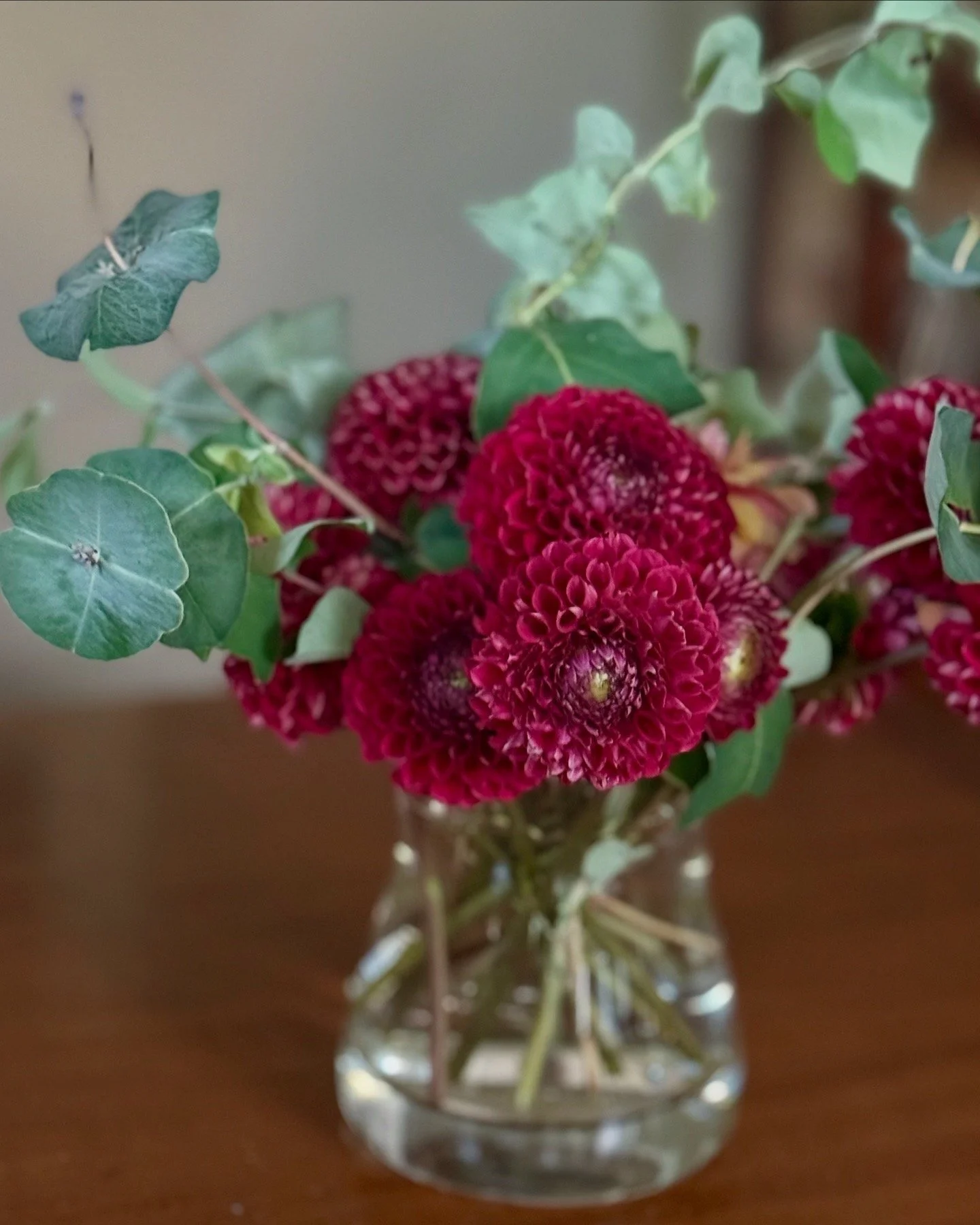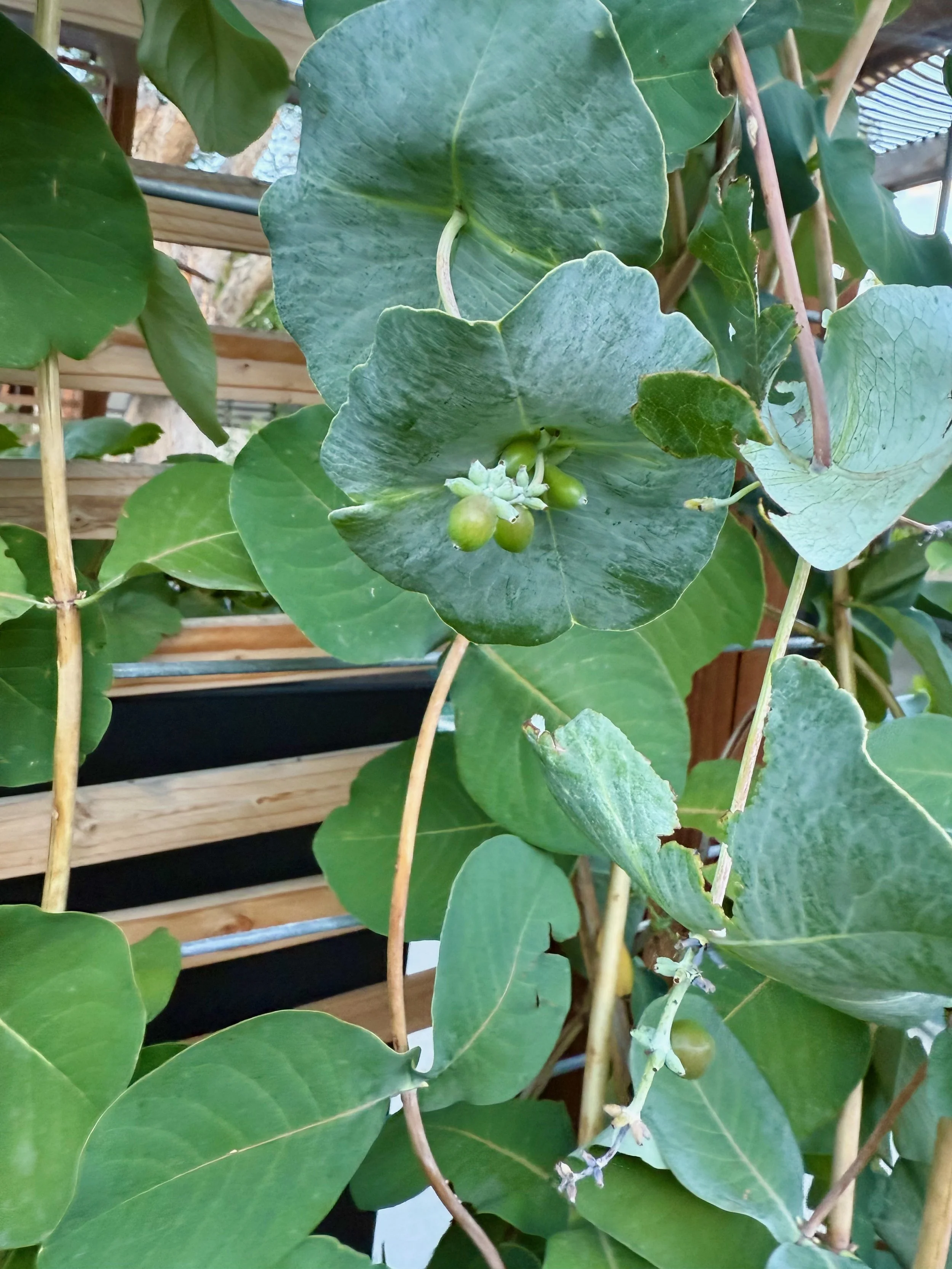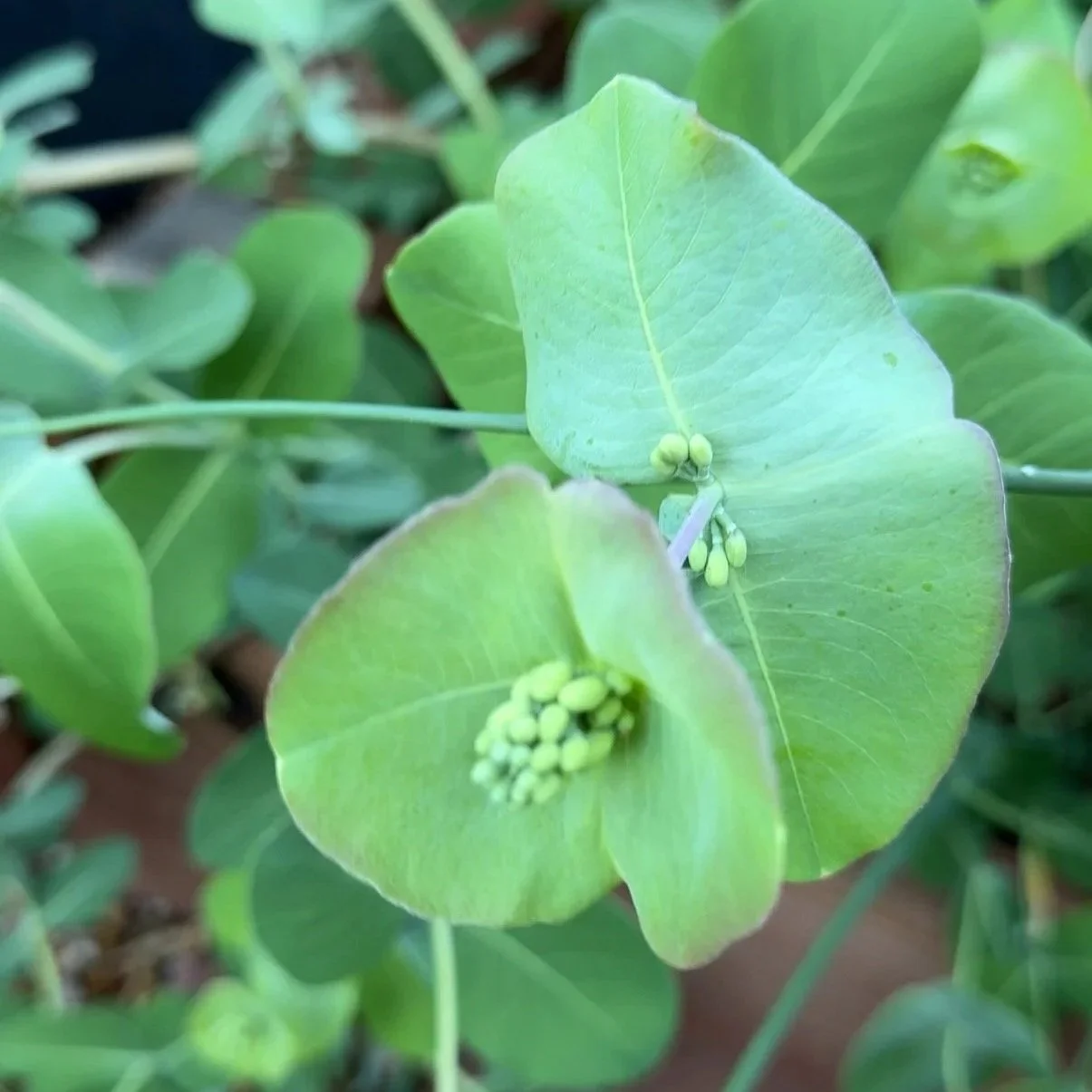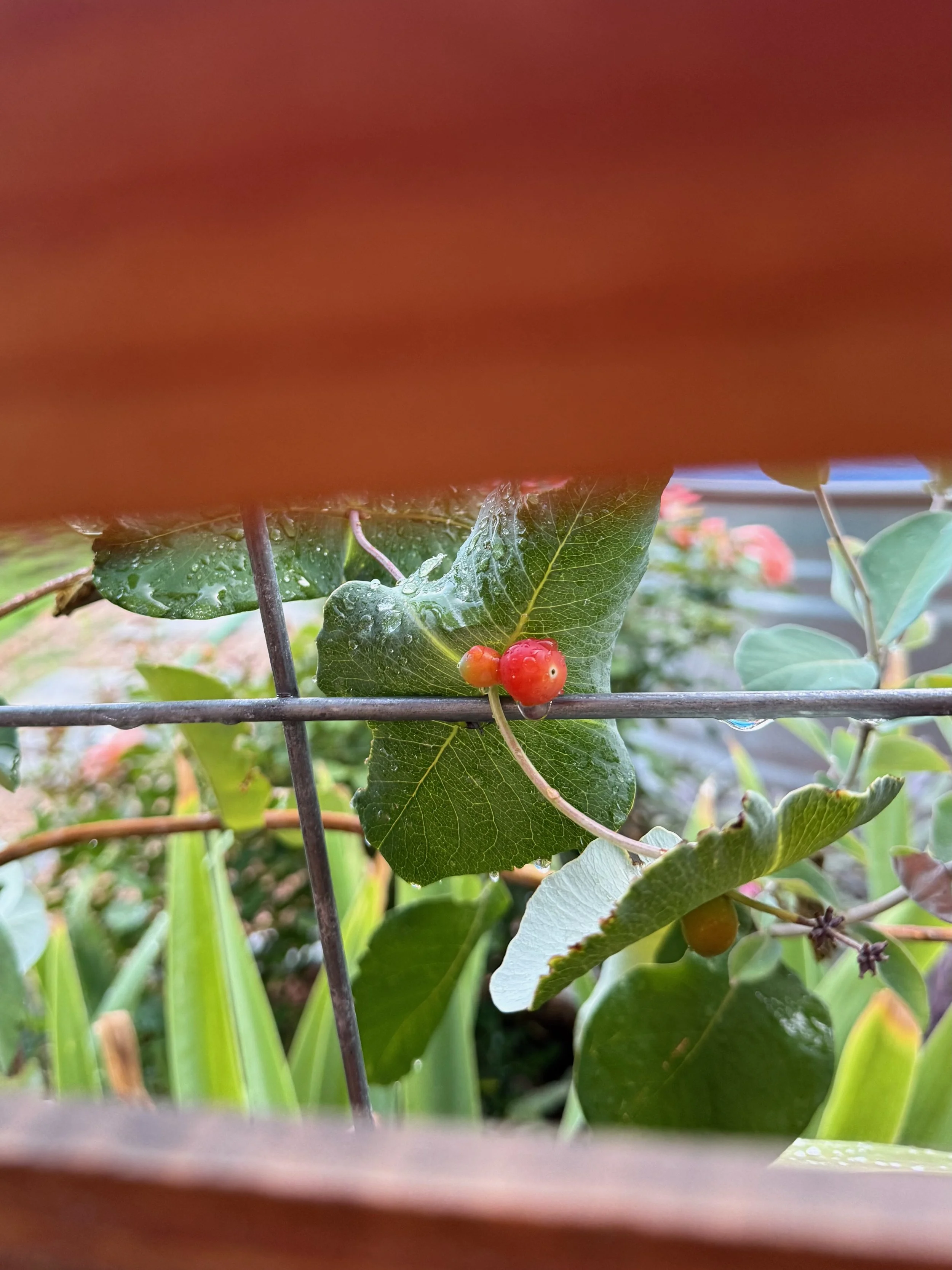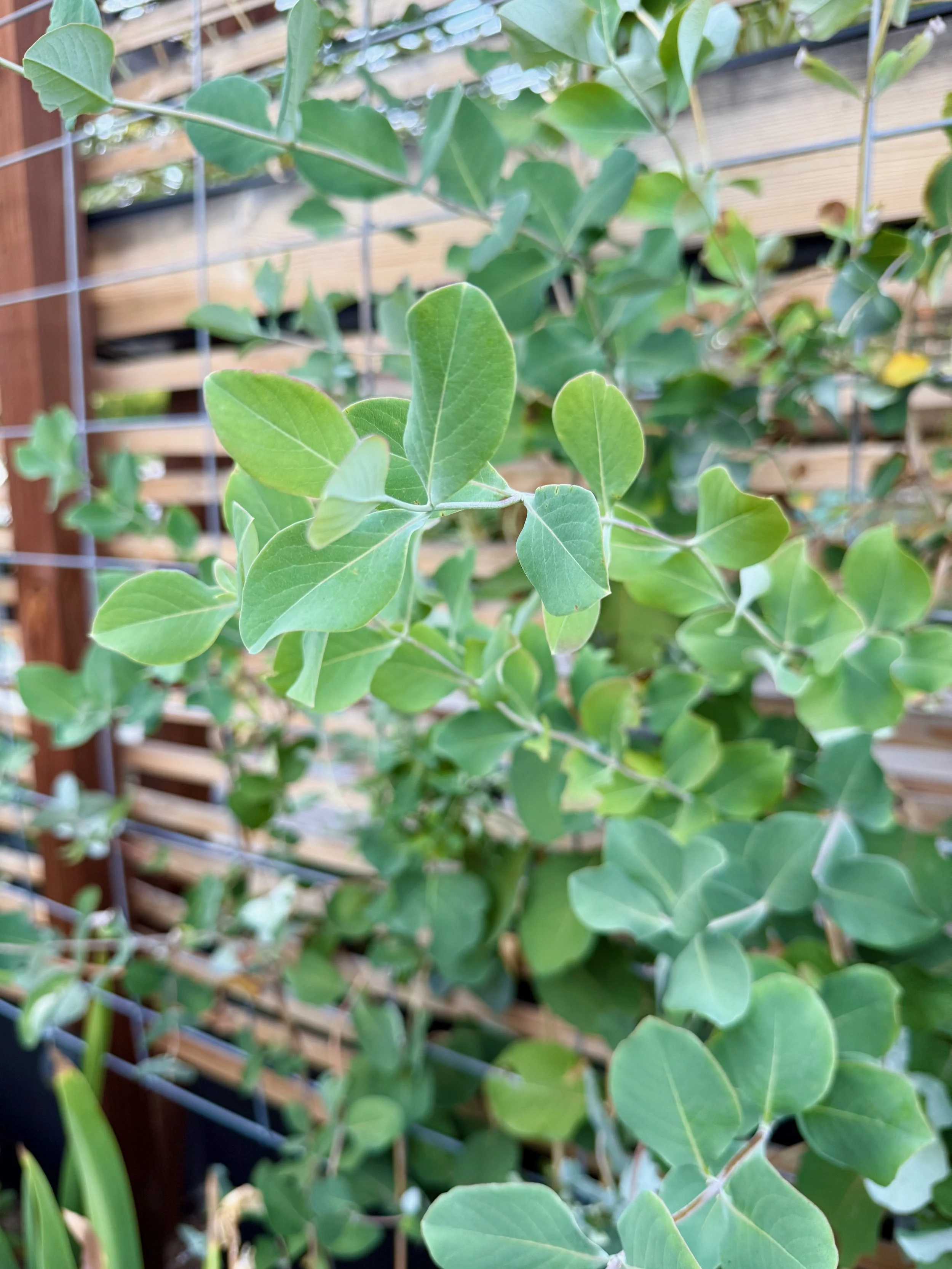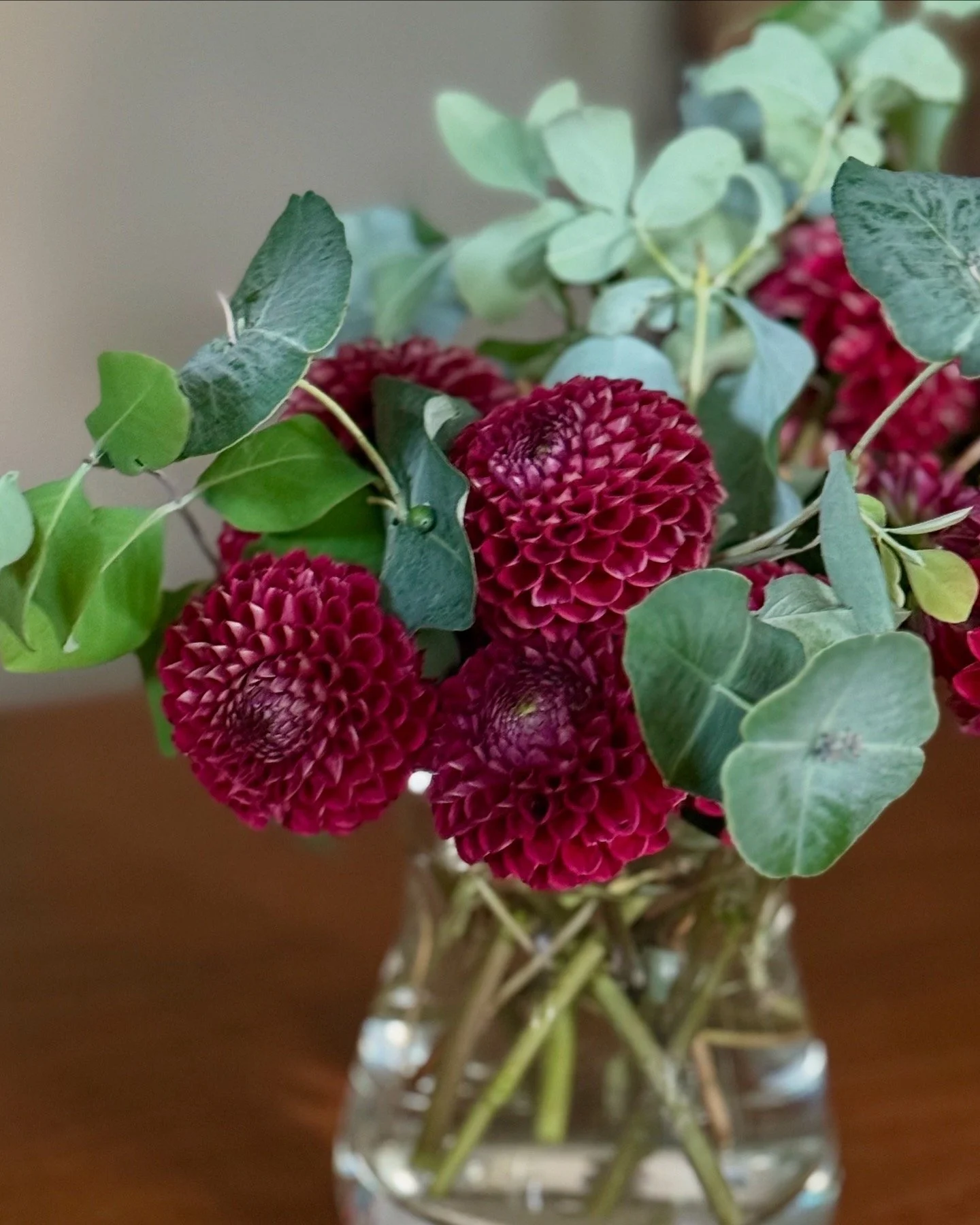Plant This!
Kintzley’s Ghost
Lonicera reticulata
Plant Kintzley’s Ghost, the Native Honeysuckle
I love a plant with a good story, and Lonicera reticulata, Kintzley’s Ghost, has a story as romantic as its common name. In the 1880’s a man named William Kintzley worked in the greenhouses at Iowa State University. There he found a unique honeysuckle plant which he propagated and grew on. It was never made available commercially, but he passed it on to a few family members across the country.
We might never have known about Kintzley’s Ghost had it not been for a Colorado plantsman who was driving down a side street in Fort Collins in 2001. He stopped having spotted a beautiful plant that looked like a Eucalyptus with a blue-green hue and rounded leaves growing in the harsh Northern Colorado climate. He knocked on the door, and the gentleman living in the home described the plant as a family heirloom and told him the story of his ancestor, William Kintzley.
Plant of the Week:
Lonicera reticulata
USDA Zones: 4-8
Water: moderate to dry
Light: full sun
Now identified as an improved variety of Lonicera reticulata, Kintzley’s Ghost is a native North American honeysuckle with delightful habits. I planted four plants three summers ago, and while they have taken a long time to establish, this year has proven that they are worth the wait!
There is an adage that native plants have a three year establishment cycle. In year one they sleep. Year two: they creep. And in year three they leap. Well, this has been dramatically true with Kintzley’s Ghost. Honestly, for the first two years I was underwhelmed. They hardly grew at all. But this year, year 3, the plants are finally starting to climb and grow up the trellis I installed for them on the side of the shade house. They also bloomed for the first time which was very exciting, too!
My plants have produced lots of stems — so many that I have been able to prune them back a bit and use them in bouquets. They make a gorgeous filler in bouquets – and this may be one of my favorite reasons to grow Kintzley's Ghost. As I understand it, an established plant grows with abandon and will produce beautiful foliage all summer, so if you love bouquets like I do, you'll never be short of filler leaves and stems.
Tips for Growing Scrophularia macrantha
Is it invasive like some other honeysuckles?
No. Unlike Japanese honeysuckle (Lonicera japonica), Kintzley’s Ghost is non-invasive and is a native North American plant. It also isn't aggressive. (Need a refresher on the difference? Read this post.)
It is a well-behaved, clump-forming vine that won't aggressively spread or take over your garden.
How tall does it grow?
This honeysuckle is a moderate climber, typically reaching 8 to 12 feet tall with support (like a trellis or fence). But some people use it as a groundcover, evidently. And I know that Erin, the Impatient Gardener, has hers trained a bit like a bush. So, it's pretty adaptable.
When does it bloom?
Late spring to early summer. The yellow tubular flowers appear first, followed by the persistent silver bracts that continue to shine through summer. Sadly, I missed most of the blooms this year as I was out of town, but I'll get photos next summer.
Does it produce berries or seed?
Kintzley's Ghost produces tiny little berries that are not very showy. Its visual appeal is mostly in the bracts and foliage.
How do I prune it?
Prune in late winter or early spring to shape or to control the size.
Remove dead or tangled growth any time.
It flowers on new wood, so pruning won't interfere with blooming.
Cut foliage for bouquets in years 3+
at the close…
I have planted Kintzley's Ghost on the South side of the Shade House. The North side is largely in the shade, but the Southern exposure bakes in sunshine all year long. The addition of Kintzley's Ghost should also make the Shade House shadier as it grows and fills in which only makes that an even more beautiful place in the summer.
I am just so pleased with what an unusual and gorgeous plant Kintzley's Ghost is becoming. And I know year on year the growth and changes will be fun to watch. It's silvery-blue-green coloring pops against the side of the Shade House, and it absolutely makes this part of my garden even more beautiful.
Subscribe now so you never miss a thing!


